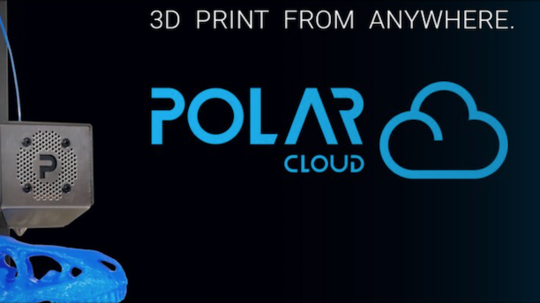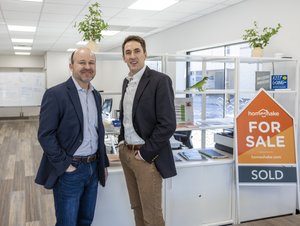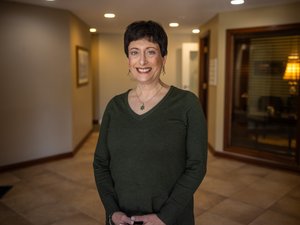
Becoming the world’s largest 3D printing ecosystem may seem like a far-fetched goal, but with over 82,000 members on their cloud-based 3D printing ecosystem across 122 countries, Polar 3D is already getting there.
Polar 3D was founded in 2013 by Bill Steele and Ed Estes to commercialize the Polar 3D printer, the world’s first 3D printer based on polar coordinates. But like many startups, Polar 3D changed its course.
The true star of this Cincinnati startup is the Polar Cloud, which gives anyone with access to the internet and a browser the ability to enter the open and collaborative environment where they can create digital designs and transform them into 3D objects by connecting to a 3D printer.
The Polar Cloud also acts as a library, where users can share their 3D designs with everyone else on the cloud. Teachers can access ready-made lesson plans on 3D printing, and users from any disparate locations can collaborate together on designs. Ultimately, the main ideas behind the Polar Cloud are increasing accessibility, education and collaboration.
“Additive manufacturing is changing how we design and the way we will make nearly everything. We need to educate and provide students access to the new tools for making,” said Greg LaLonde, CEO of Polar 3D. “From Nairobi to New York, students on the Polar Cloud can collaborate, design, and create things. It empowers anyone with a browser to have certain tools for making.”
The growth of the Polar Cloud has been fueled by Polar 3D’s partnership with General Electric for the Additive Education Program. Launched in 2017, the AEP aims to make 3D printing technologies, also referred to as additive manufacturing, accessible to students around the world in order to train youth for STEM fields and using additive technologies.
In its first year, the AEP has sent Polar Cloud-enabled 3D printers to over 400 primary and secondary schools, and direct laser melting machines to eight colleges and universities. GE estimates that the AEP has given 180,000 students worldwide access to 3D printers. There is still time to submit an application for the second year of the AEP before the Feb. 28 deadline.
LaLonde said the AEP program has facilitated getting other 3D printer manufacturers onto the Polar Cloud. The current 82,000 members is a large jump from the 5,000 members that were on the cloud in March 2017. The Polar 3D employees love seeing which country users will join the cloud from next. LaLonde said the most recent countries are Honduras and Cambodia.
While Polar 3D only has 15 employees, the company looks at every member of the Polar Cloud as a contributor to their network. “As you join the network, you can add value to others within the network. The reach is phenomenal,” LaLonde said. “I just love all the data we get about consumption and the designing and modeling that is occurring around the clock 24/7.”
But Polar 3D enjoys more than the numbers the AEP has brought. The program has cultivated the company’s core values of education and access. LaLonde said all the components of 3D printing have educational value. The technology is applicable to the technologies students will study later in life or the skills they need to develop for future jobs. Many colleges also have curriculums dedicated to the field. LaLonde said supporting the educational endeavors of young people is important to Polar 3D because it is the future.
“It’s all of our responsibility to equip ourselves and future generations with opportunity. This technology is going to play an important role in the future, so we need our educational institutions to adopt it so that access at a young age can occur,” LaLonde said. “Engineers fundamentally can design things differently because of the way they now can be made. Education access facilitates the global adoption and continued adoption of technology and develops future talent.”
LaLonde said Polar3D plans to continue expanding globally to fuel this global adoption of technology. In the process, they hope to emerge as the largest ecosystem for additive manufacturing in the world. “It really is fun work,” LaLonde said. “The teachers and educators are so fantastic — they’re just thrilled to have these tools. The students’ stories are also great. The industry in general is inspiring as well with what’s coming in terms of healthcare, aviation, automotive and space. They’re all involving more and more 3D printing and additive technologies.”








